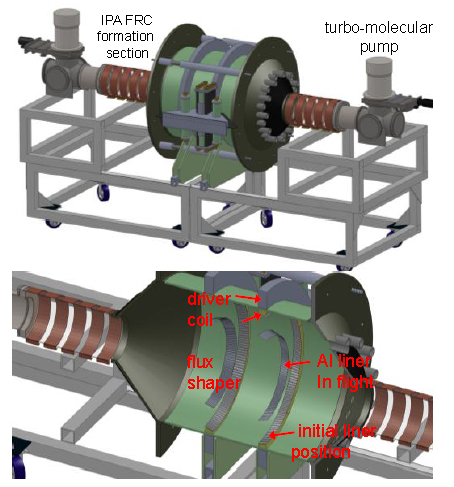

| Visitors Now: | |
| Total Visits: | |
| Total Stories: |

| Story Views | |
| Now: | |
| Last Hour: | |
| Last 24 Hours: | |
| Total: | |
The Fusion Driven Rocket: Nuclear Propulsion through Direct Conversion of Fusion Energy
From
More on John Slough's direct conversion fusion propulsion project which has phase 2 NIAC funding
The future of manned space exploration and development of space depends critically on the creation of a dramatically more proficient propulsion architecture for in-space transportation. A very persuasive reason for investigating the applicability of nuclear power in rockets is the vast energy density gain of nuclear fuel when compared to chemical combustion energy. Current nuclear fusion efforts have focused on the generation of electric grid power and are wholly inappropriate for space transportation as the application of a reactor based fusion-electric system creates a colossal mass and heat rejection problem for space application. The Fusion Driven rocket (FDR) represents a revolutionary approach to fusion propulsion where the power source releases its energy directly into the propellant, not requiring conversion to electricity. It employs a solid lithium propellant that requires no significant tankage mass. The propellant is rapidly heated and accelerated to high exhaust velocity (over 30 km/s), while having no significant physical interaction with the spacecraft thereby avoiding damage to the rocket and limiting both the thermal heat load and radiator mass. In addition, it is believed that the FDR can be realized with little extrapolation from currently existing technology, at high specific power (about 1 kW/kg), at a reasonable mass scale (less than 100 mt), and therefore cost. If realized, it would not only enable manned interplanetary space travel, it would allow it to become common place.
See more and subscribe to NextBigFuture at 2012-09-08 01:59:10 Source: http://nextbigfuture.com/2012/09/the-fusion-driven-rocket-nuclear.html
Source:



